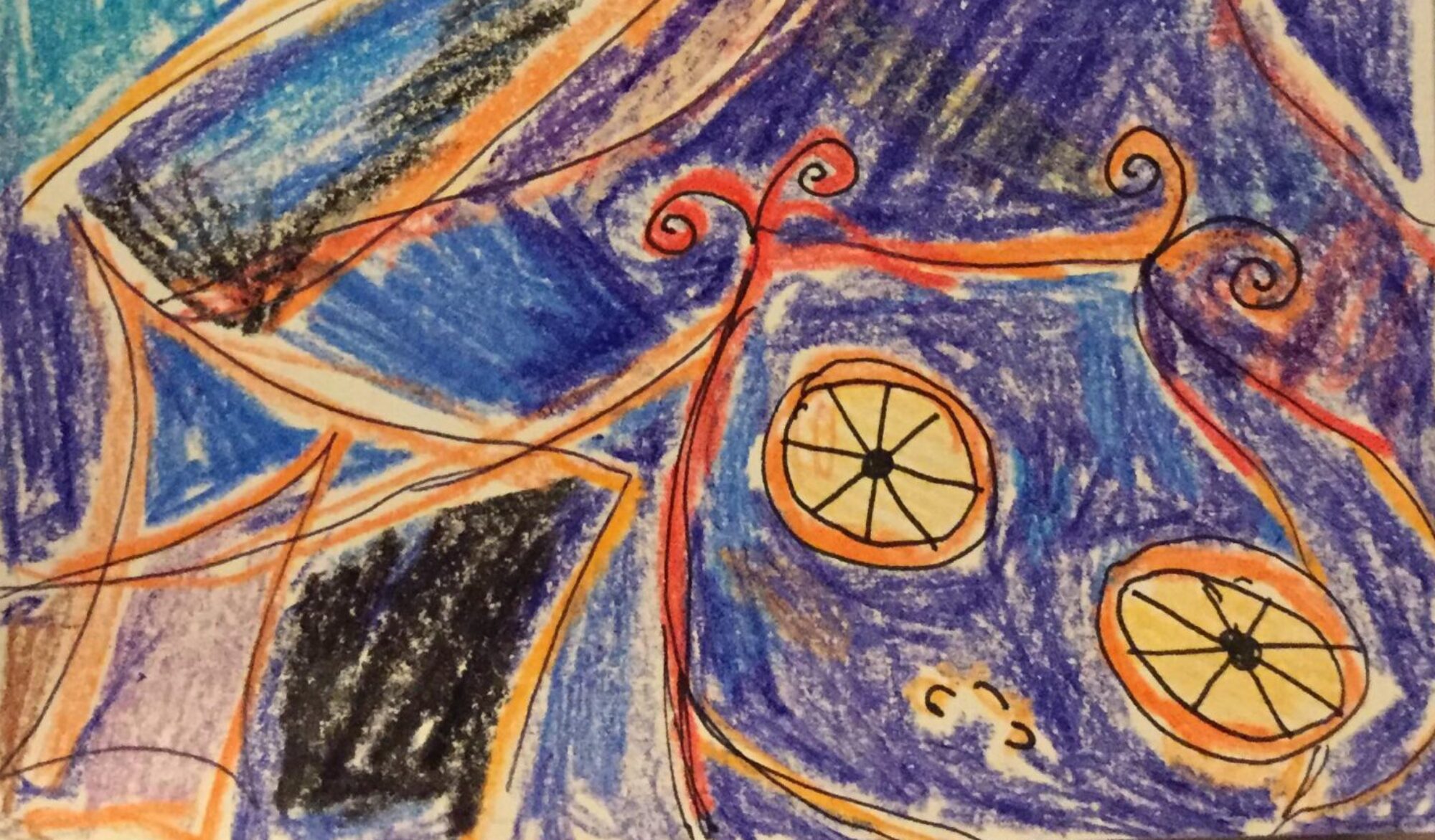Conceptual starting point
I have been exploring the concept of the found object this week. Paired with the arguments I’m facing in my philosophy course on the existence of ordinary objects, I noticed how every conglomerate of matter is always found from behind some veil. We’re dealt a mucky, foggy lens that won’t quite focus on anything in particular, but rather perceives only the spatialization of everything on a tip-of-the-iceberg sort of level, and we barely ever bother to acknowledge its existence, much less examine its physical state and give it a clean.
In lockdown, all I have is my own room and my own eyes. Before the pandemic, I already struggled with dissociating from reality due to anxiety. When I am not fully present, it often feels like when one just wakes up; it often feels like I am floating of hovering above my own head, perceiving everything as blurry.
When I practice being present, my lens appears to be wiped clean and I begin to notice the details and the simplicity of the complexity of every object I am presented with – I have a conversation with it, sometimes over a cup of tea. One can understand the past of rocks, rings, mirrors, mountains and mugs just by being present with them, witnessing how they occupy that specific region of space-time. In that practice, what you will often find reflected back at you is you. If anything, the object, the other, and the self are all vessels through which we get a glimpse of our own perception.
It’s as much about the atoms arranged mirror-wise as it is about those which they reflect. It’s as much about the observer as it is about the observed.
This is what I think Duchamp was suggesting by presenting an ordinary object as art; its very nature is transient and speaks to the playfulness of the observer’s mind, and to their capacity to cleanse their lens and re-interpret their own projection of the world.
Like Duchamp, I’ve found myself questioning the lenses through which I perceive my surroundings and my self, in both the physical and the mental (they are one and the same, after all). As this course is about the exterior world (the city), my project will be centered around the types of physical lenses through which we perceive the world, by working with the idea of eyeglasses, windows, screens, mirrors and clear materials, and also how they interact with the elements. As the UK is still in lockdown, much of what I experienced of the city this semester consisted of streets of memory, lanes of imagination and the lines between the real and the surreal becoming blurred. I could make a further distinction between the lenses we use to perceive the exterior versus the interior world, but I’ve found the two to be too interlaced for it to be a worthwhile distinction to make, as they both shape and influence each other.
The eye is the first filter of our physical reality, and vision has a depth and weight and presence which can never quite be captured in all its vastness and detail through any language (Strzemiński). We get to choose where to look. What sticks is that which is most intensely felt, which involves twisting the senses, adjusting the lens, and this is something people who wear glasses such as myself can do in a very physical way whenever they please, by removing or putting them on. I’ve been watching the moon ripen and become fuller these past few weeks from my window, so its growth has become familiar, and if I squint at it, it looks so clearly like the moon has a face. However, if I take off my glasses, the moon is simply a ball of dense white light with a rainbow glow – it’s always looks like a full moon. Shifts in perspective happen constantly, by where, through what, how and for how long we choose to look. In this short video I want only to show that movement of the eye, by capturing my blurry perspective as I wake into the world from dream state.
Primary research
I am planning on creating a blurry film of my morning routine from my own perspective, that captures the haziness of waking up in lockdown and the feeling of dissociating from reality. I plan on filming it on my from behind a foggy lens that emulates what it’s like to wake up and to capture the process of looking and noting the world around me.
I’ve been sketching mirror drawings that capture a single, very time and space-specific perspective. The very process of creating them involves a physical process of shutting one eye so as to ease the transition into 2D and lose depth perception. The face becomes physical, ‘real’ and easy to trace, and as does the outside world. I wanted to include mirrors in the film in some way because they are an object that stays in one place in time, but that captures that which is fleeting.
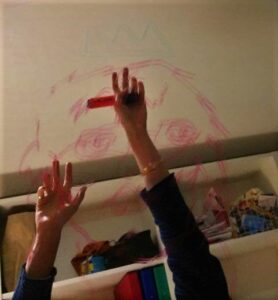
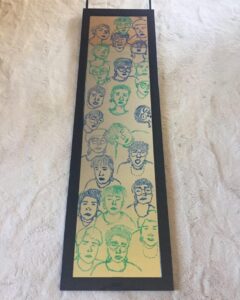


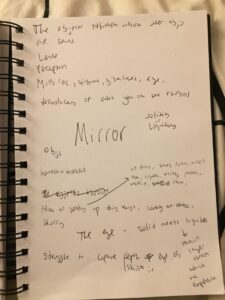

Mirror images and thoughts
I experimented with placing different translucent materials of different levels of opaqueness over my phone lens and seeing the effect it had on the image. I used different pieces of sea glass and crystals, which altered the color of the image. I then experimented with cellophane and Vaseline and decided it found it resembled the way I see the world without my glasses. Though mirrors (or screens, to some extent) are not translucent or transparent, I consider them to be in the same category as windows in terms of their clarity and sharpness in capturing reality and translating it into a two dimensional, easily digestible, flat plane.

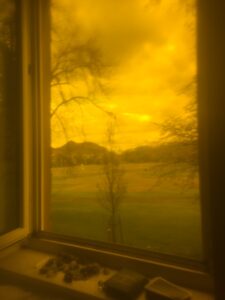
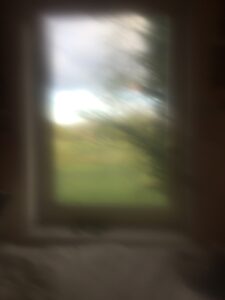
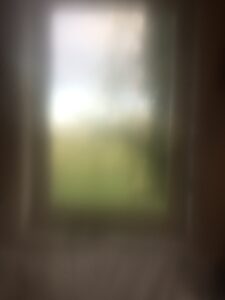
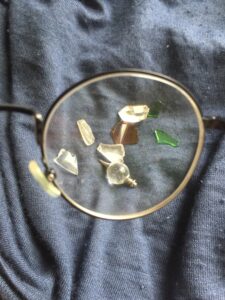
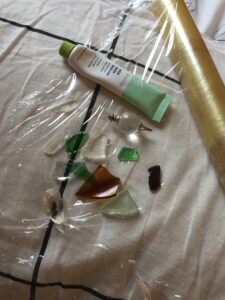
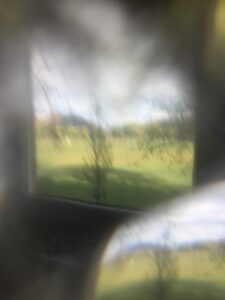
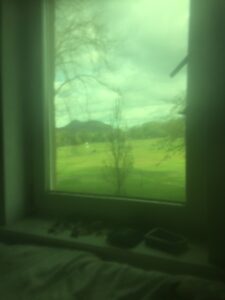
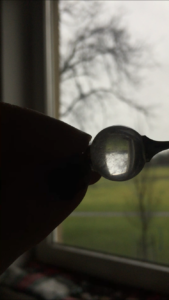
Translucent lenses – objects through which other objects are found
There is juxtaposition in the translucency of see-through substances, shifting from hard materials such as sea glass and crystals, as well as glasses, mirrors and windows to more liquid forms of transparency such as Vaseline and cellophane and ultimately, the eye.
In the film, I encounter many objects around my room, but the true found object in it is ‘sight’ itself, and the objects through which we see other objects. I see as soon as I wake up, even if just a blurry outline of objects. I see a glass that I pick up. I see the window and the world outside the window. I see the mirror, and myself in that mirror. Finally, I see my glasses, and the world through them, which becomes much clearer. At the end, I include a clip of me looking out the window and disappearing, as I imagine myself when I am not looking in the mirror. Sight is found through the film, as new objects are interacted with, but it is ultimately ‘found’ when I put on my glasses and find the world in a much clearer way.
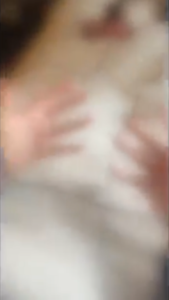
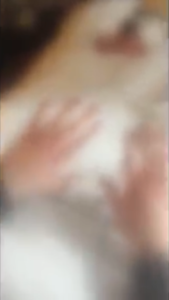

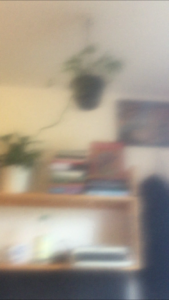
Stills from ‘good morning, objects!’ film, Blades. 2021
I encounter myself at the end of the film, as a 2-dimensional image in the mirror. I decided to draw shapes on my face before putting on my glasses and studying what I had done because to emulate the feeling of not even knowing what one looks like, the self observed becoming separate from the self observing. I was unsure whether to add any audio, but I settled on adding 40 HZ frequency because it seemed to mirror the numbness one experiences when feeling so distant from reality. The lasts three images represent a mixture of surprise but ultimate acceptance of what one looks like in reality.

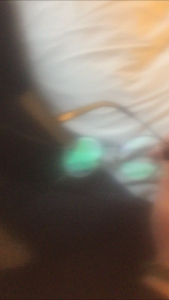
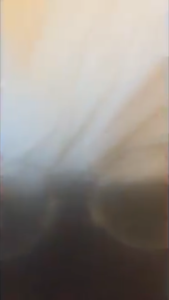
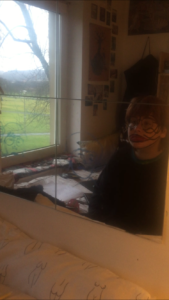

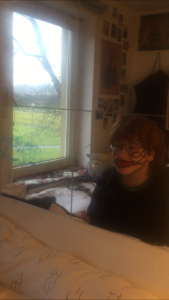
Stills from ‘good morning, objects!’ film, Blades. 2021
Secondary research
I started by researching sight, and how we see through the eye and relate those images to our self. ‘Ways of Seeing’ by John Berger showed the insufficiency of language for conveying the way we see the world, because experience precedes language. One can recreate their way of perceiving though representation, such as film, to externalize or materialize the creator’s way of seeing. This is what I wanted to do as a first project – externalize my current reality as best I could.
Władysław Strzemiński’s theory of vision helped me to conceptualize the interaction between sight and thought in a really interesting way. We see, in the sense of vague outlines of things, by receiving visual sensation. But we see, as in understand, because of the constant corrections of thinking in relation to seeing – this makes it so that images don’t just pass fruitlessly by: ‘We recognize what each visual sensation means and to which fragment of reality it corresponds.’
‘But seeing is not just the passive reception of visual sensations. We analyse the received sensations, confront them with corresponding fragments of reality, make sense of the emergent interrelations and causes: what sort of sensations they are and what they say about the objectively existing world. In addition to the passive, physiological reception of visual sensations, there is the active, cognitive work of our intellect. There is the mutual influence of thinking on seeing and seeing on thinking. Thinking poses questions for seeing to answer. Seeing accumulates a stock of observational material, which is validated and universalised in the process of thinking. Thanks to the constant corrections of thinking in relation to seeing, we are able to make ever better use of received visual sensations.’
‘It is not the biological reception of visual sensations that determines how the real world is seen, but the co-operation of seeing and thinking ‘
Michaelangelo Pistoletto’s mirror paintings portray still moments painted onto life-sized reflective surfaces that interact with the space they are placed in. In them, the ‘true protagonist’ of the painting is the spectator, who by interacting with the still image captures a passing fragment of time. The way he plays with time, space and mirrors felt very connected to this film, where I interact with my own mirror, seeing it clearly at the same time that the viewer does, and being just as surprised as they are as to what I look like as I am.
The mirrored surface is instrumental to Pistoletto’s practice. The reflective plane of his paintings draws the viewer and their environment into the work, altering the fiction of the painted image as a frozen moment. An ardent advocate of the performative in art, Pistoletto’s work emphasises interactivity, spontaneity, the multiplicity of imaginative worlds, and an active relationship between artwork and spectator. The mirror creates a gateway for the viewer into the virtual space of the work, creating a portal between art and life. ‘The true protagonist’, he wrote of his mirror paintings in 1966, ‘was the relationship of instantaneousness that was created between the spectator, his own reflection, and the painted figure, in an ever-present movement that concentrated the past and the figure in itself to such an extent as to cause one to call their very existence into doubt: it was the dimension of time itself’.

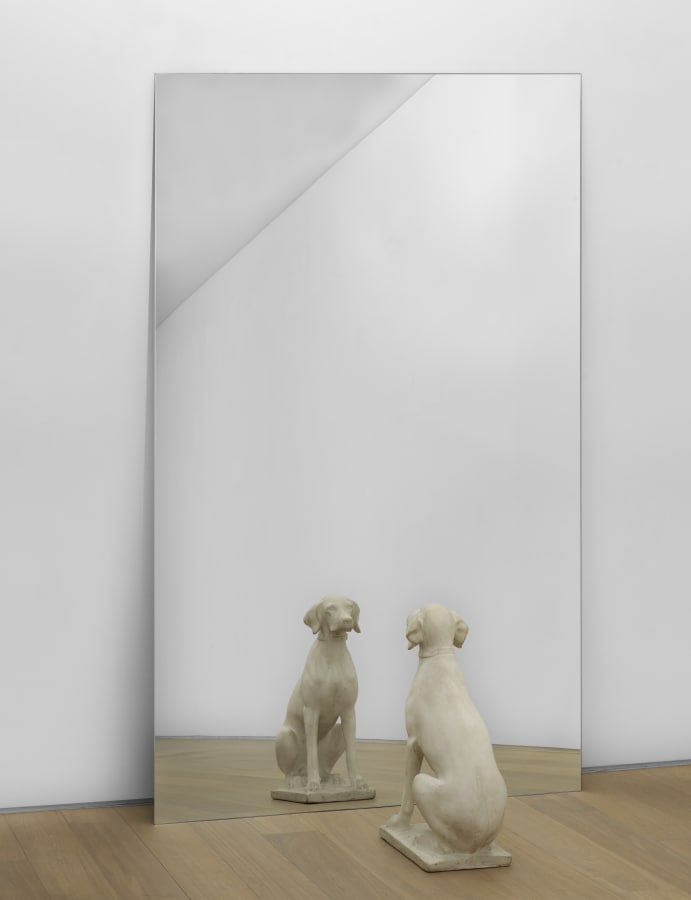

Michaelangelo Pistoletto mirror images
A big source of inspiration for the film became the title sequence of the animated ‘Bojack Horseman’, which I’ve been watching on repeat in lockdown. It shows the main character, Bojack, waking up and ‘floating’ through his day upon waking, seeing people and objects but never being able to interact with them. The short film touches on this same feeling of loneliness and dissociation from external objects and from oneself.
Finally, Juliana Barwick’s music and video for ‘Inspirit’ also really inspired the way I wanted this film to look and feel:
